I. Introduction
A. Importance of Maintaining Proper Tire Pressure
One of the often overlooked aspects of vehicle maintenance is maintaining proper tire pressure. Adequate tire pressure not only ensures optimal vehicle performance but also significantly contributes to safety on the road. Improper tire pressure can lead to issues such as decreased fuel efficiency, uneven tire wear, reduced traction, and an increased risk of accidents. Regularly checking and adjusting tire pressure is a simple yet crucial task that every vehicle owner should prioritize.
B. Convenience of Using Gas Station Air Pumps
Gas stations offer a convenient solution for maintaining proper tire pressure through the availability of air pumps. These air pumps are usually easily accessible, and many operate 24/7, providing drivers with the flexibility to address their tire pressure needs at any time. Knowing how to use these air pumps can save both time and money while ensuring the safety and efficiency of your vehicle.
II. Preparing for the Task
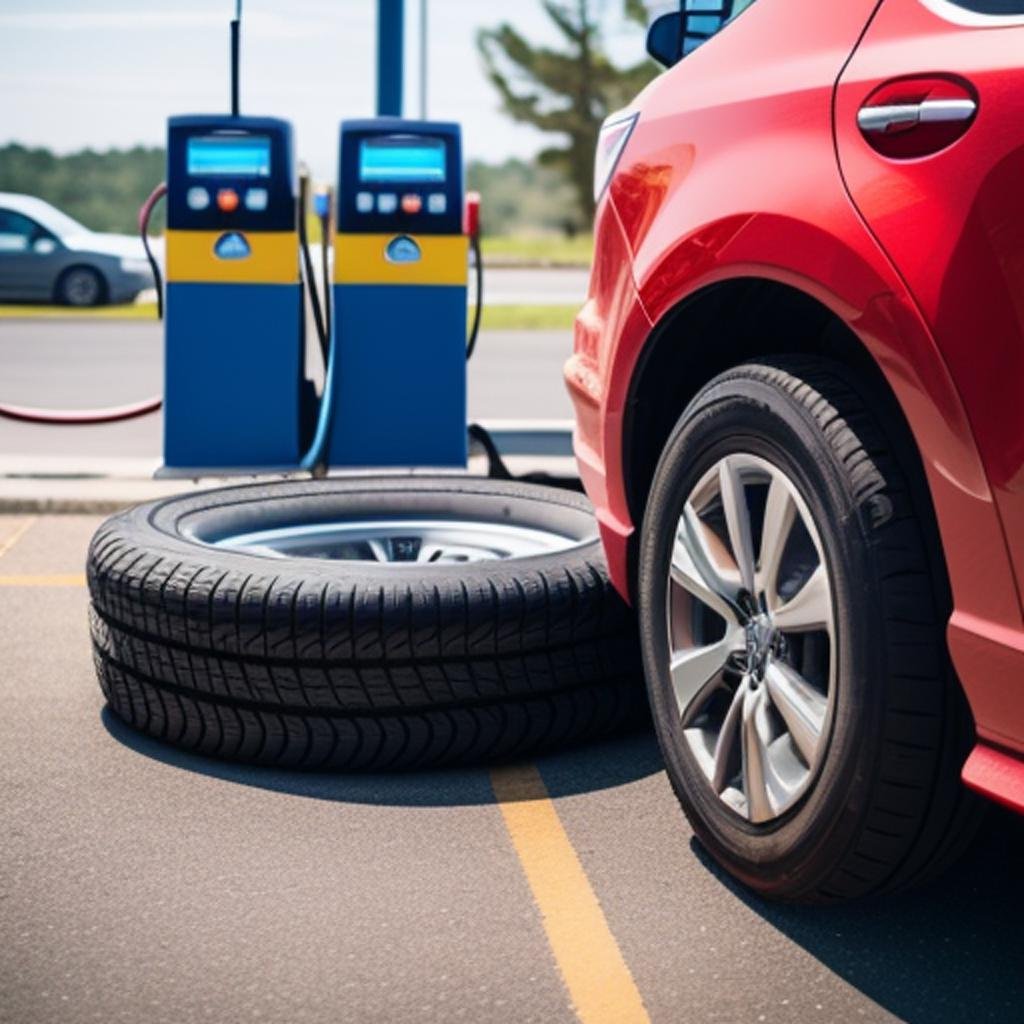
A. Gather Necessary Materials
- Tire Pressure Gauge
Before heading to the gas station, ensure you have a reliable tire pressure gauge. This simple tool allows you to measure the air pressure in your tires accurately. Digital or analog, these gauges are available at auto parts stores and are a valuable investment for any vehicle owner.
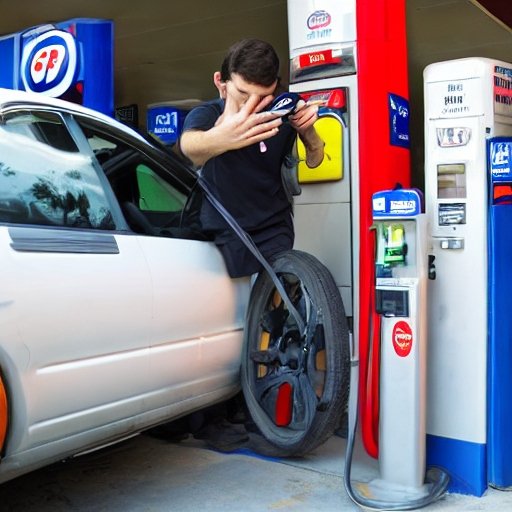
- Quarters or Payment Method for Air Pump
While many gas stations offer free air, some may require a small fee for using their air pumps. Be prepared with quarters or any payment method accepted by the gas station to avoid any inconvenience.
B. Identifying the Recommended Tire Pressure
Consult your vehicle’s owner’s manual or the sticker located on the driver’s side door jamb or inside the glove compartment to determine the recommended tire pressure. It’s essential to fill your tires to the manufacturer’s specifications, as overinflated or underinflated tires can compromise safety and performance.
III. Locating a Suitable Gas Station
A. Choosing a Gas Station with Air Pump Services
Not all gas stations offer air pump services, so it’s crucial to choose one that provides this amenity. Here’s how you can identify a suitable gas station:
- Online Research: Many gas stations now list their amenities online. Use search engines or dedicated apps to find gas stations in your vicinity that offer air pump services.
- In-vehicle Navigation Systems: Modern vehicles often come equipped with navigation systems that can help you locate nearby gas stations. Some systems even provide information about available services, including air pumps.
- Ask Locals or Fellow Drivers: If you’re in an unfamiliar area, don’t hesitate to ask locals or fellow drivers for recommendations. They may provide valuable insights into nearby gas stations with reliable air pump services.
B. Considering Factors like Accessibility and Cleanliness
Once you’ve identified gas stations with air pump services, consider the following factors before making a decision:
- Accessibility: Choose a gas station that is easily accessible, especially if you are in a hurry or facing adverse weather conditions. Check if the gas station is located conveniently along your route.
- Cleanliness: A clean and well-maintained gas station is not only more pleasant to visit but also reflects on the quality of service. Look for a gas station that maintains its air pump area, as this can be indicative of a well-managed facility.
IV. Using the Gas Station Air Pump
A. Understanding the Air Pump Interface
Gas station air pumps come with different interfaces, and understanding them is the first step towards successfully inflating your tires.
1. Digital vs. Analog Displays
Gas station air pumps may feature either digital or analog displays. Digital displays provide a clear and precise reading of the tire pressure, making it easier for users to monitor and adjust accordingly. Analog displays, on the other hand, use traditional pressure gauges with a needle pointing to the pressure level.
2. Pressure Units (PSI)
Familiarizing yourself with pressure units is essential. Most gas station air pumps measure pressure in pounds per square inch (PSI). Ensure you are aware of your vehicle’s recommended PSI, which can usually be found in the owner’s manual or on a sticker inside the driver’s side door.
B. Steps to Follow for Inflating Tires
1. Removing Valve Cap
Start by removing the valve cap from the tire. This small cap covers the valve stem and needs to be taken off before attaching the air hose.
2. Attaching the Air Hose Securely
Align the air hose nozzle with the valve stem and press it firmly onto the stem. Make sure there are no leaks, as a secure connection is crucial for effective inflation.
3. Inputting the Correct Tire Pressure
If the gas station air pump features a digital display, input the correct tire pressure using the keypad. For analog displays, keep an eye on the needle as it moves to the desired pressure level.
4. Initiating the Air Flow
Once the settings are in place, start the air flow by pressing the designated button on the pump. Monitor the inflation process and listen for any unusual sounds that might indicate a problem.
5. Monitoring the Pressure and Stopping When Appropriate
Keep a close eye on the pressure reading during inflation. Stop the air flow when the tire reaches the recommended PSI. Overinflating can be as detrimental as underinflating, so accuracy is crucial.
6. Checking and Adjusting Pressure as Needed
After inflating, double-check the tire pressure with a separate gauge. If adjustments are required, use the gas station air pump to fine-tune the pressure until it matches the recommended level.
In conclusion, using a gas station air pump to put air in your tires is a straightforward process when you understand the interface and follow the necessary steps. Regularly maintaining proper tire pressure contributes to a safer and more efficient driving experience, making it well worth the time and effort invested in this simple yet essential task.
V. Putting Air in Tires at a Gas Station: Troubleshooting Common Issues
Maintaining proper tire pressure is crucial for vehicle safety and performance. While inflating your tires at a gas station seems straightforward, there can be common issues that you might encounter. In this guide, we will delve into troubleshooting these problems to ensure a smooth and efficient tire inflation process.
A. Low Pressure or Slow Inflation
One of the most common issues faced while inflating tires at a gas station is experiencing low pressure or slow inflation. This can be frustrating, but there are several reasons behind this problem. First and foremost, check if the tire valve is properly connected to the air hose. Sometimes, a loose or improperly attached connection can lead to air leakage, resulting in slow inflation.
Additionally, inspect the tire valve for any damage or debris that may hinder proper air flow. A damaged valve stem or a blockage can significantly affect the inflation process. If the valve is damaged, it’s advisable to consult a professional for replacement.
Another possible cause of slow inflation is a faulty pressure gauge on the air pump. Before relying on the gas station’s equipment, consider using a portable tire pressure gauge to cross-verify the readings. If the gas station’s gauge is inaccurate, inform the station attendant and proceed with using your own gauge for precise pressure control.
B. Malfunctioning Air Pump
Encountering a malfunctioning air pump is another common issue that motorists may face. When this occurs, it’s essential to stay calm and follow a systematic approach to resolve the problem. Firstly, inform the gas station attendant about the malfunction. Gas station personnel are trained to handle such situations and may either guide you through an alternative solution or assist with using another working pump.
If the issue persists, consider checking the air pump’s power source. Sometimes, a tripped circuit breaker or a power outage can render the pump inoperable. In such cases, inform the gas station staff to address the electrical issue promptly.
It’s also worth noting that extreme weather conditions, such as very cold temperatures, can affect the functionality of air pumps. If the pump still fails to operate despite the absence of apparent issues, consider seeking assistance from the gas station staff or finding an alternative station nearby.
C. Handling Overinflated Tires
Overinflated tires can pose serious safety risks, affecting the vehicle’s handling and stability. If you notice that your tires are overinflated during the inflation process, it’s crucial to address the issue promptly.
Start by checking the tire pressure with a reliable gauge to confirm over inflation. If the gas station’s air pump allows, release some air by pressing the nozzle on the tire valve gently. Be cautious not to release too much air, as it may lead to underinflation.
In cases where the gas station’s air pump lacks a pressure release feature, you can use a handheld pressure gauge to measure the tire pressure accurately. If the tires are overinflated, drive the vehicle a short distance to normalize the pressure before rechecking and adjusting as necessary.
In conclusion, while putting air in tires at a gas station is a routine task, troubleshooting common issues ensures a safer and more efficient experience. Whether dealing with low pressure, a malfunctioning air pump, or overinflated tires, a methodical approach and proper communication with gas station personnel will help resolve these issues effectively.
VI. Safety Tips and Precautions
A. Ensuring the Vehicle is Parked Safely
Before embarking on the tire inflation process, it’s essential to park your vehicle in a safe and stable location. Choose a flat surface away from traffic, ensuring the parking brake is engaged. This precautionary step not only enhances personal safety but also facilitates a more straightforward and efficient tire inflation experience.
B. Properly Securing the Air Hose and Equipment
Once parked, it’s time to set up the equipment. Make sure to properly secure the air hose to the tire valve stem. Ensure a snug fit to prevent air leaks during inflation. Carefully inspect the hose for any signs of damage, such as cracks or leaks, and avoid using it if any issues are detected. Additionally, always adhere to the recommended pressure levels specified for your vehicle, usually found in the owner’s manual or on a sticker located on the driver’s side doorjamb.
C. Monitoring the Tire Pressure Throughout the Process
As the tire inflates, it’s crucial to monitor the pressure regularly. Many gas station air pumps come equipped with pressure gauges, allowing users to keep a close eye on the inflation progress. Overinflated or underinflated tires can affect vehicle handling, fuel efficiency, and overall safety. Therefore, maintaining a steady watch on the pressure gauge ensures that the tires are filled to the recommended levels.
VII. Additional Tips for Tire Maintenance
A. Regularly Checking Tire Pressure at Home
In addition to utilizing gas station air pumps, proactive tire maintenance includes regular checks at home. Invest in a quality tire pressure gauge to monitor and maintain the recommended pressure levels. This practice not only contributes to safer driving conditions but also extends the lifespan of your tires. Aim to check tire pressure at least once a month, and especially before embarking on long journeys.
B. Understanding the Impact of Temperature on Tire Pressure
Temperature fluctuations can significantly impact tire pressure. As the temperature changes, so does the air inside the tires. Warmer temperatures tend to increase tire pressure, while colder temperatures can cause it to decrease. It’s crucial to account for these variations and adjust tire pressure accordingly. Regularly monitoring and adjusting tire pressure in response to temperature changes contribute to optimal tire performance and safety on the road.
In conclusion, putting air in tires at a gas station is a routine yet crucial aspect of vehicle maintenance. By adhering to safety measures, monitoring the inflation process, and incorporating additional tire maintenance tips, drivers can ensure their vehicles remain safe, efficient, and roadworthy.
VIII. Important tips Putting Air in Tires at a Gas Station
| Tips |
|---|
| Check Tire Pressure Beforehand |
| Use a Reliable Pressure Gauge |
| Refer to the Vehicle’s Recommended Pressure |
| Add Air in Short Bursts and Check Pressure Frequently |
| Avoid Overinflating Tires |
| Secure the Valve Cap Properly |
| Follow Any Additional Guidelines at the Gas Station |
IX. Picture Gallery Putting Air in Tires at a Gas Station
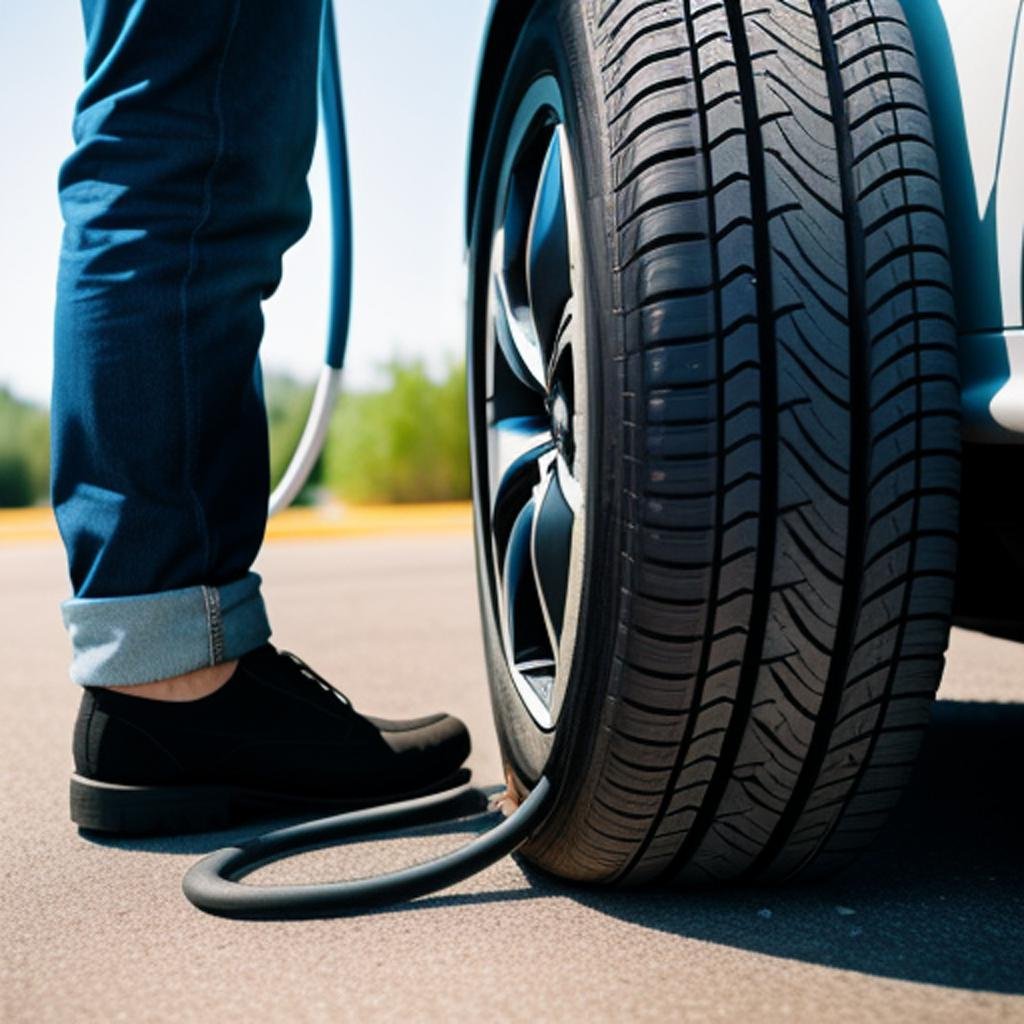
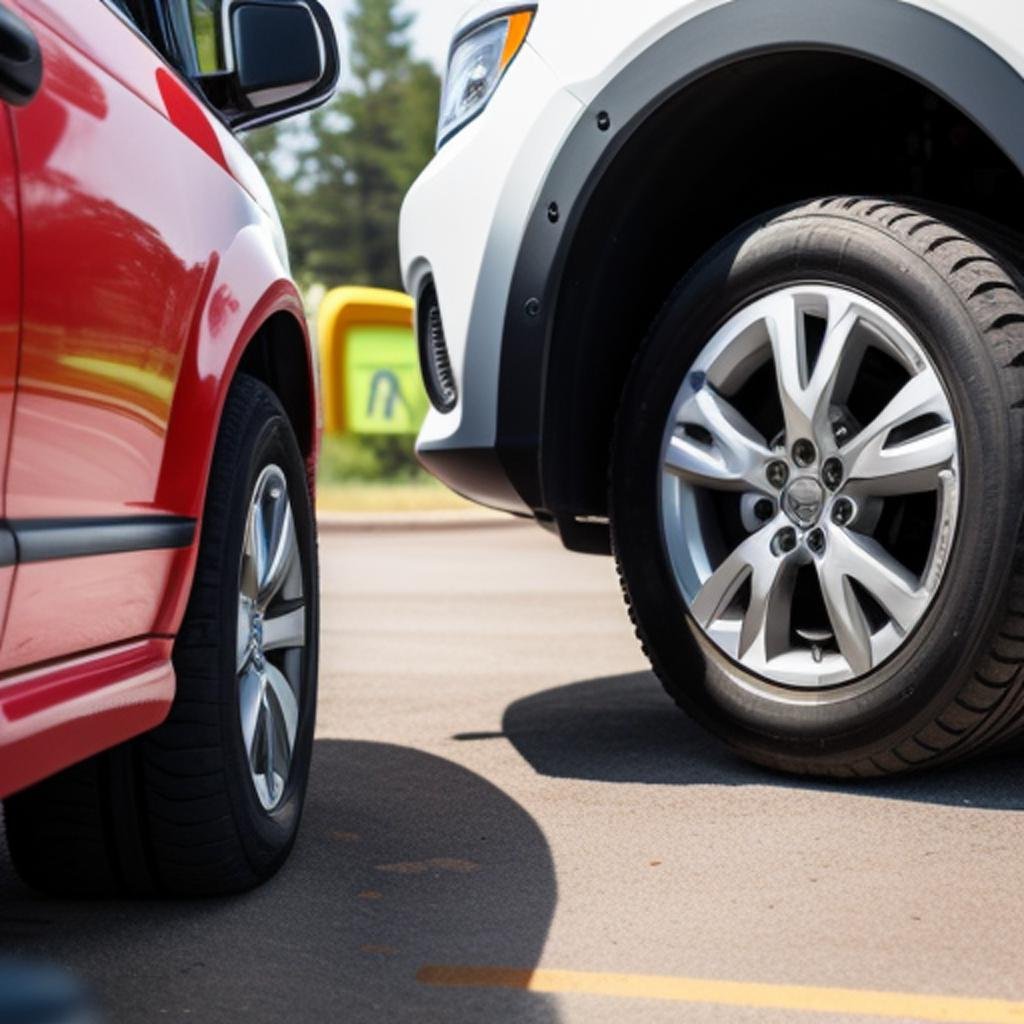


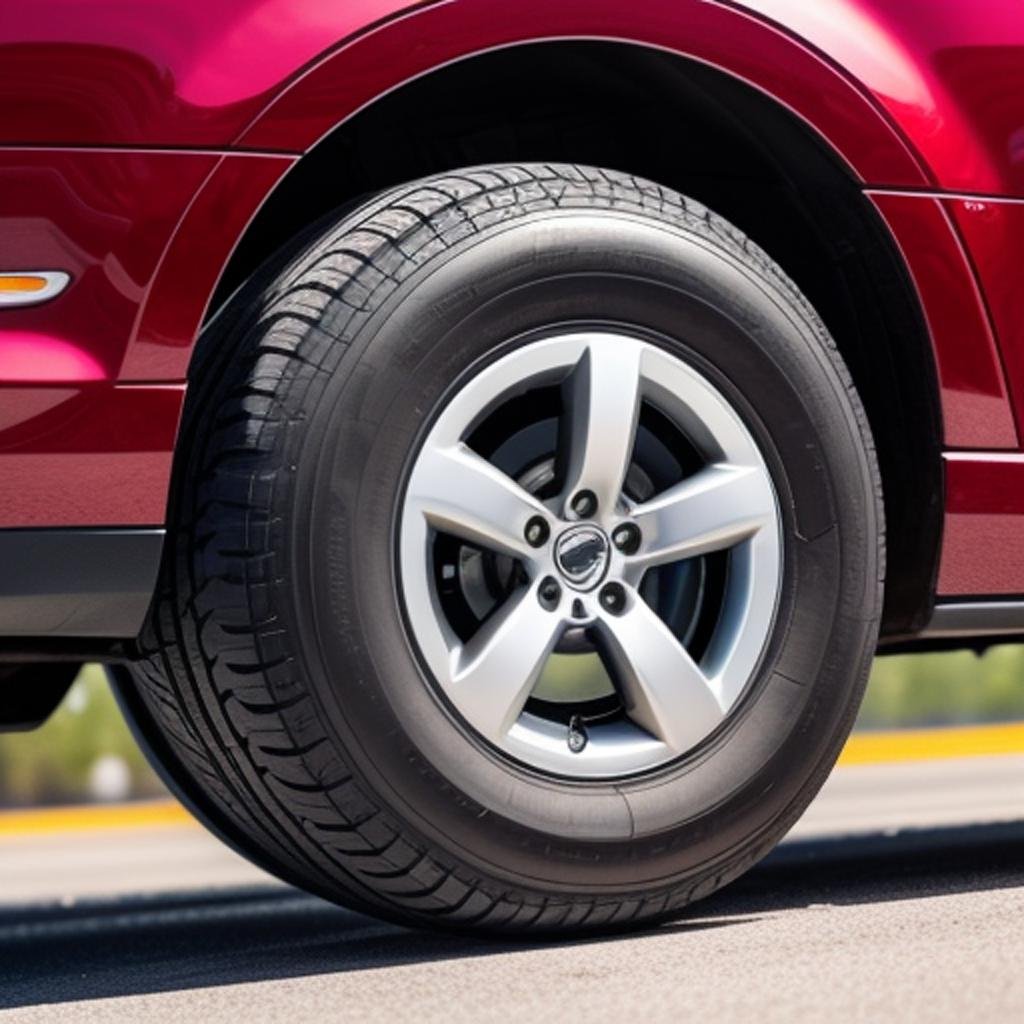
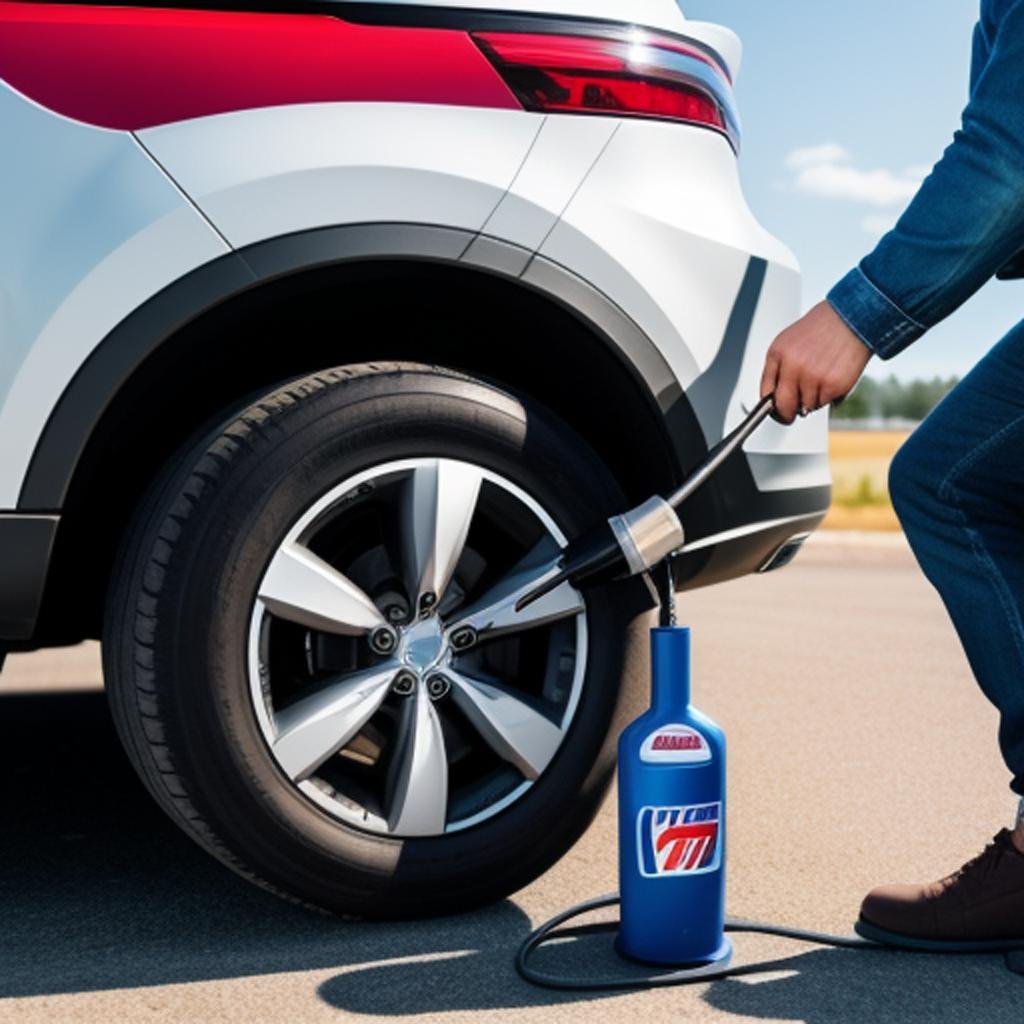
X. Conclusion
A. Recap of the Steps for Putting Air in Tires at a Gas Station
In conclusion, ensuring your vehicle’s tires are properly inflated is a crucial aspect of responsible car ownership. The process of putting air in tires at a gas station is straightforward and can be easily accomplished by following a few simple steps. To recap:
- Park Safely: Begin by parking your vehicle in a safe and convenient location near the air pump at the gas station.
- Prepare the Necessary Tools: Gather the required tools, including a tire pressure gauge and some loose change if payment is required for the air pump.
- Check Tire Pressure: Use the tire pressure gauge to check the current pressure of each tire. This information will guide you in determining how much air needs to be added.
- Insert Payment if Necessary: If the gas station requires payment for air, insert the required amount of money or use any provided payment method.
- Connect the Air Hose: Attach the air hose securely to the valve stem of the tire. Ensure a tight seal to prevent air leakage during the inflation process.
- Inflate the Tire: Start the air pump and fill the tire with the recommended amount of air. Keep an eye on the tire pressure gauge to avoid overinflating.
- Check Pressure Again: After inflating the tire, recheck the pressure with the gauge to ensure it matches the recommended level.
- Repeat for Other Tires: Repeat the process for each tire on your vehicle, paying attention to the recommended tire pressure values for front and rear tires.
- Replace Valve Caps: Once all tires are properly inflated, securely replace the valve caps to prevent dust and debris from entering the valve stems.
By following these steps, you can maintain the optimal tire pressure for your vehicle, contributing to better fuel efficiency, improved handling, and increased safety on the road.
B. Emphasizing the Importance of Maintaining Proper Tire Pressure
Properly inflated tires are not only crucial for the longevity of your tires but also play a significant role in overall vehicle performance and safety. Maintaining the correct tire pressure offers several benefits, such as:
- Improved Fuel Efficiency: Properly inflated tires reduce rolling resistance, improving fuel efficiency and helping you save money on gas over time.
- Enhanced Safety: Adequate tire pressure ensures optimal traction, reducing the risk of accidents, especially during adverse weather conditions.
- Extended Tire Lifespan: Over or underinflated tires wear unevenly, leading to premature tire wear. By maintaining proper tire pressure, you can extend the lifespan of your tires and save money on replacements.
- Better Handling and Performance: Vehicles with correctly inflated tires handle better, providing a smoother and more controlled driving experience.
In conclusion, taking a few minutes at the gas station to check and adjust your tire pressure is a small investment that pays off in improved safety, fuel efficiency, and the overall well-being of your vehicle. Regularly monitoring and maintaining proper tire pressure should be an integral part of every driver’s routine, contributing to a safer and more efficient driving experience.
FAQS
Q: Can I use any gas station air pump to fill my tires?
A: Most gas stations have air pumps that are suitable for filling tires. However, it’s essential to check if the pump has a pressure gauge and is in proper working condition before use.
Q: How much does it cost to put air in tires at a gas station?
A: Many gas stations offer free air for tire inflation. However, some may charge a small fee. It’s advisable to check the station’s policy or look for signage indicating the cost before using the air pump.
Q: What is the recommended tire pressure for my vehicle, and where can I find this information?
A: The recommended tire pressure is often specified in the vehicle owner’s manual or on a sticker located on the driver’s side door jamb. It’s crucial to fill your tires to the recommended pressure to ensure optimal safety and performance.
Q: How do I use the air pump at a gas station to fill my tires?
A: First, park your vehicle close enough to reach all tires with the air hose. Remove the valve cap from the tire, attach the air hose securely to the valve stem, and set the desired pressure on the pump. Inflate the tire in short bursts, periodically checking the pressure with a gauge until it reaches the recommended level.
Q: What should I do if the gas station air pump doesn’t work or is not providing enough pressure?
A: If the air pump is not functioning correctly, it’s best to notify the gas station attendants or choose another nearby station. It’s essential to avoid overinflating your tires, and if you encounter persistent issues, consider seeking assistance from a professional mechanic.


